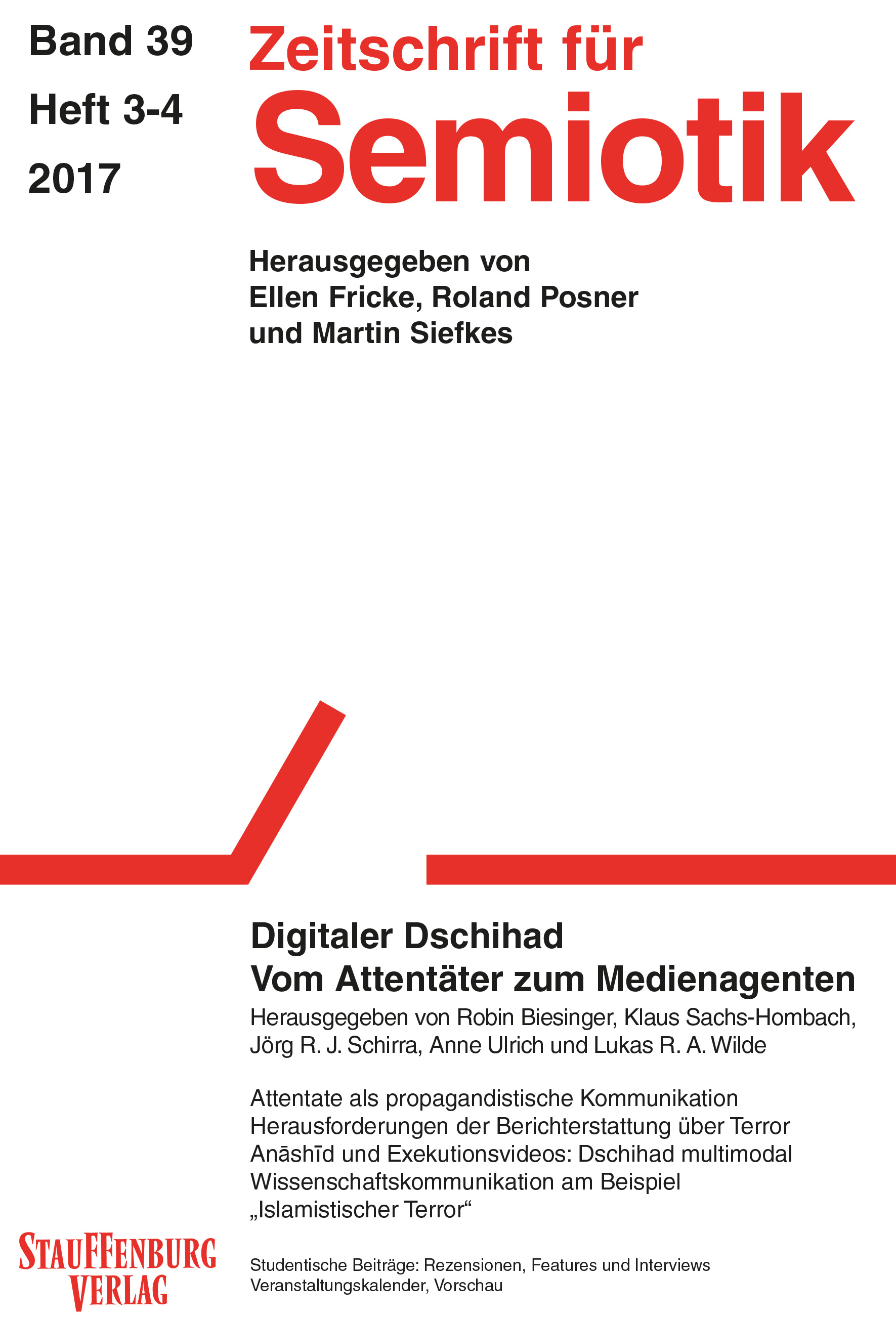Exekutionsvideos des Islamischen Staates
Filmsprache, Zielpublika und rhetorische Potenziale
DOI:
https://doi.org/10.14464/zsem.v39i3-4.684Keywords:
execution video, Islamic State (IS), persuasive communication, rhetoric, documentary film, film history, video analysis, film semiotics, filmic code, cadrage, montage, film analysisAbstract
Capital punishment videos are a fringe genre of film that for more than a century experienced virtually no systematic development in regard to style and cinematic techniques. This has changed, however, with the recent works of the Islamic State (IS), which made an effort to invest in its media production and to gain control of the processes of filmic signification. Using the genre as a rhetorical utterance, the IS employs videographic documents of capital punishment to produce communicative acts directed towards the population of the Islamic State as well as viewers outside of it. In this regard, the Islamic State’s video production of the years between 2014 to 2017 is particularly powerful in communicating the IS world view. Its media workers have mastered a range of cinematic techniques, and acquired the ability to control the connotative level of film signs to a greater degree than the producers of previous capital punishment videos. By the same token, capital punishment videos of the Islamic State indicate a wealth of IS-specific discourses with respect to its military, ideological claims and the construction of enemies.
Downloads
Published
Issue
Section
License
Copyright (c) 2024 Yorck Beese

This work is licensed under a Creative Commons Attribution 4.0 International License.
Copyright for articles published in this journal is retained by the authors. The content is published under a Creative Commons Licence Attribution 4.0 International (CC BY 4.0). This permits use, distribution, and reproduction in any medium, provided the original work is properly cited, and is otherwise in compliance with the licence.


